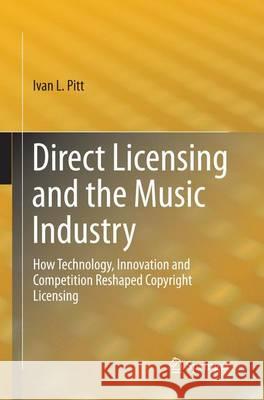Direct Licensing and the Music Industry: How Technology, Innovation and Competition Reshaped Copyright Licensing » książka
topmenu
Direct Licensing and the Music Industry: How Technology, Innovation and Competition Reshaped Copyright Licensing
ISBN-13: 9783319368030 / Angielski / Miękka / 2016 / 293 str.
Direct Licensing and the Music Industry: How Technology, Innovation and Competition Reshaped Copyright Licensing
ISBN-13: 9783319368030 / Angielski / Miękka / 2016 / 293 str.
cena 402,53
(netto: 383,36 VAT: 5%)
Najniższa cena z 30 dni: 385,52
(netto: 383,36 VAT: 5%)
Najniższa cena z 30 dni: 385,52
Termin realizacji zamówienia:
ok. 22 dni roboczych
Dostawa w 2026 r.
ok. 22 dni roboczych
Dostawa w 2026 r.
Darmowa dostawa!
Kategorie:
Kategorie BISAC:
Wydawca:
Springer
Język:
Angielski
ISBN-13:
9783319368030
Rok wydania:
2016
Wydanie:
Softcover Repri
Ilość stron:
293
Oprawa:
Miękka
Wolumenów:
01











